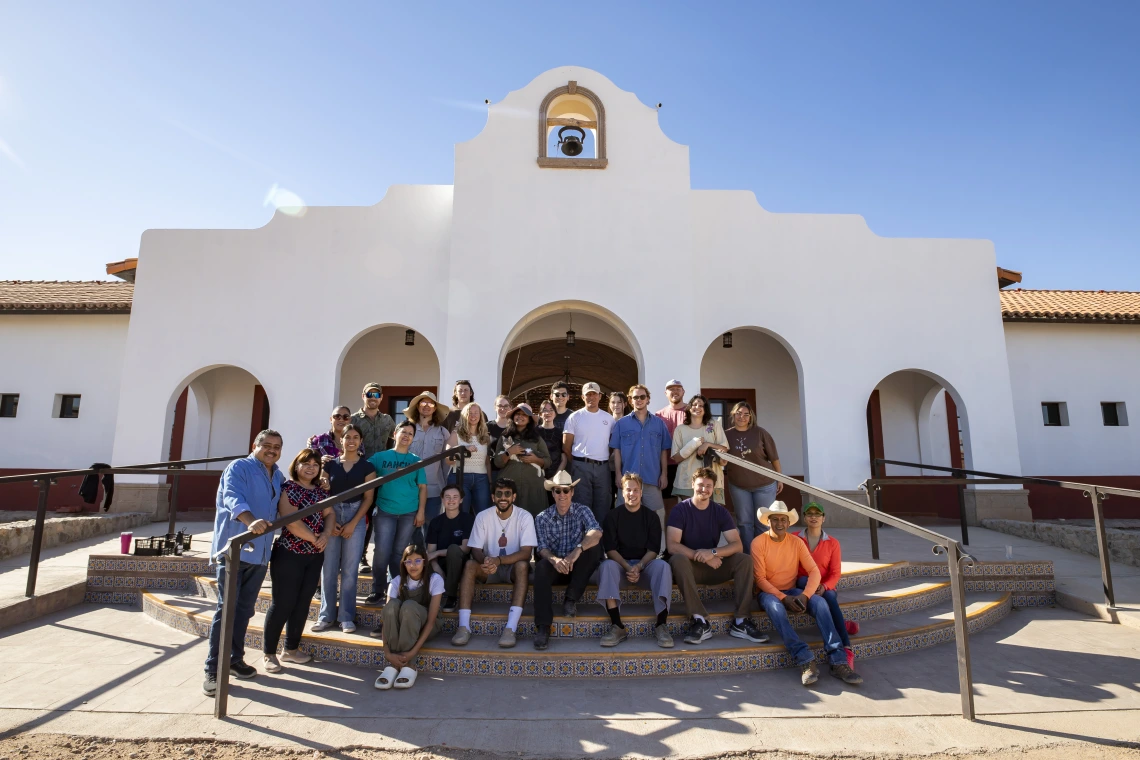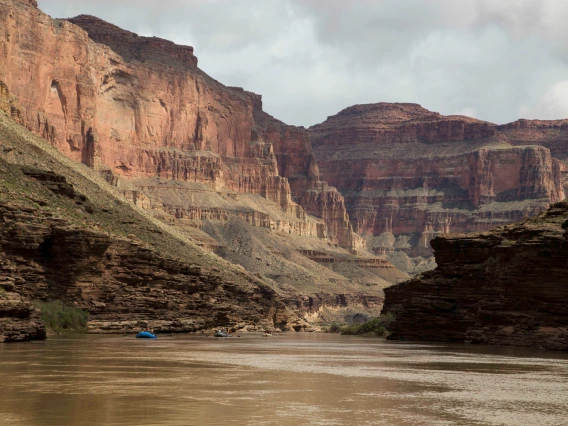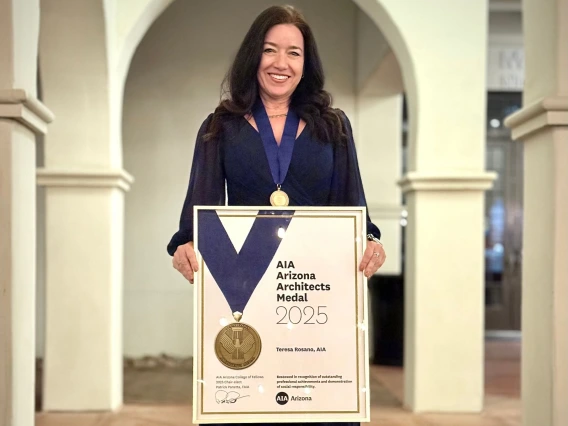CAPLA, Rancho Feliz build a brighter future at the U.S.-Mexico border

ARC471/571 Arid Region Urbanism students visit La Hacienda Feliz in Agua Prieta, Sonora.
Tucson architect and CAPLA alumnus Bob Vint, assistant professor of practice in the School of Architecture, donated his time and skills to the design of 'La Hacienda Feliz,' a volunteer dormitory for the Rancho Feliz Charitable Foundation.
The project is located in Agua Prieta, Sonora, a small community of 100,000 residents near Douglas, Arizona, on the U.S.-Mexico border.
From September through April each year the Rancho Feliz program brings groups of volunteers, mainly American high school and university student, and occasionally business and community groups, to Agua Prieta for a week or two to build houses for needy and deserving families in the colonias (shanty towns). Colonias are found on the outskirts of border cities all the way from Tijuana to Matamoros. For more than 20 years, Rancho Feliz has built hundreds of safe, clean homes, replacing shacks made from scrap boards and cardboard, thereby significantly improving the quality of life for thousands of people.
In years past volunteers would by lodged in motels and the homes of supporters in Agua Prieta. The purpose of La Hacienda Feliz is to provide common living quarters to bring volunteers together in a safe and secure location and foster a sense of community. On the north side of the courtyard are men’s and women’s dormitory rooms, each housing 20 volunteers. On the south side of the courtyard are 6 private rooms for chaperones, parents, and donors. Along the east side of the courtyard there’s a large dining hall and kitchen, while on the west are meeting rooms, laundry, storage, book/gift shop, and museum of border culture and artifacts collected by Gil Gillenwater.
Vint’s collaboration with Rancho Feliz began in mid-2020 when Jerry Dixon, the developer of Tucson’s Mercado District, recommended him to Gil Gillenwater, the foundation’s founder.
“There’s a lesson here for young architects—one project leads to another,” Vint said. “Ironically, working for a well-to-do, for-profit client led me to designing for a nonprofit organization that benefits the underserved.”
Vint worked closely with Agua Prieta architect Luis López Escárcega and the construction company Desarollos Constructivos de Sonora to design the traditional courtyard building, complete with a covered outdoor walkway around the central patio connecting all the rooms.
His contributions included developing the building form, fenestration, roof framing system, heavy timber trusses at the dining hall, and entry portico. The dormitory’s design is neo-traditional, incorporating natural materials such as heavy timber trusses, wood decking, clay brick bovedas (vaults), stone paving and terracotta tile roofs. All walls are masonry. Rustic elements including mesquite tree porch posts with stone foundations were added at the insistence of the client, who wanted to create the ambience of a traditional Mexican ‘hacienda’ for visitors.
Born near the border at Ft. Huachuca, AZ, Vint’s ties to Mexican culture and history run deep. His first visit to Mexico, at age five, left a lasting impression.
“Both the beauty of Mexican culture and the signs of stark inequality, the divide of wealth and poverty, stayed with me,” he said. “I saw kids my own age on the streets selling chicle (chewing gum) out of necessity to help support their families. And that’s still happening today.”
Fluent in Spanish, Vint has traveled extensively across Mexico, visiting 20 of its 31 states, from the northern regions of Sonora and Chihuahua to the southern border of Chiapas.
“I realize that I've visited more states in Mexico than in the U.S.,” he said.
Vint’s commitment to assisting Mexican communities stretches back decades. In the late 1980s and early 90s he supported the Colonia Los Tápiros in Nogales, Sonora by delivering warm clothing and building materials. In 1993 he designed the Centro Comunitario Los Tápiros, that was built by colonia residents themselves as a place to meet and organize. And in 2008-2009 he participated with the Comité Pro-defensa del Patrimonio to save a landmark sculpture in Nogales, El Monumento a la Razón (aka ‘El Mono Bichi’) from demolition, by relocating it out of the path of a highway overpass.
“In each of these endeavors I donated my professional time,” Vint said.
Students in Vint’s Arid Region Urbanism seminar experienced the realities of life along the border during an overnight field trip to Agua Prieta, lodging at Hacienda Feliz.

CAPLA students visit new home built by Rancho Feliz volunteers.
They visited a colonia where Rancho Feliz builds homes and met residents and helped distribute groceries to families in need. A highlight of the trip was meeting a single mother raising three children and touring their 400-square-foot house.
Steven Burkett, a student in the master of architecture program, reflected on the experience.
“Agua Prieta was an eye opening experience of how the world truly works south of the U.S. border,” he said. “You need to experience it to understand the weight of what’s happening.”
He also took a moment to share what he learned about architecture and planning.
“It’s interesting to see the expression of a place that does not have zoning laws in the area,” said Burkett. “When we were driving down the street it would go from a factory, to a convenience store, to homes, to cigarette stores and back to a factory in less than 200 feet.”
The group also explored Agua Prieta’s central plaza and notable works of contemporary architecture by Fernanda Canales, including the Ba-Chicui Library and a community sports complex. Their stay at La Hacienda Feliz featured a carne asada dinner with mariachi music, immersing the students in border culture.
Rancho Feliz aims to improve living conditions for border communities while educating visitors about systemic poverty and inequality.
“Children are born every day into extreme poverty in the colonias along the U.S.-Mexico border - if they were born just a couple miles further north, their lives and opportunities would be completely different,” Vint said. “Understanding and appreciating this will inform our perspective on the border issue, and how fortunate those of us who were born into different circumstances truly are.”
For Burkett, the trip underscored the importance of using one’s skills to help others.
“What I take for granted on an everyday basis, someone else is struggling to find,” he said. “If helping someone in that level of need does not shake you to your core, it would make me question what would.”



